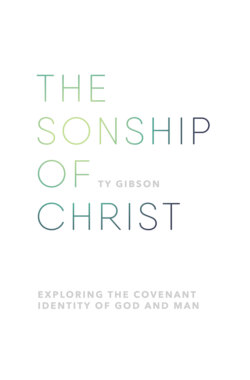Читать книгу The sonship of Christ - Ty Gibson - Страница 12
“The God who made humanity intends to save humanity from the inside, from within our very own genetic realm, from the strategic position of a Son of God who will be born within the Adamic lineage.” Chapter six SOLOMON, MY SON
ОглавлениеAs the story continues to unfold, David has a son, to whom he gives the name Solomon. True to the trajectory of the plan, God transfers to Solomon the unique
position of Sonship:
He shall build a house for My name, and he shall be My son, and I will be his Father; and I will establish the throne of his kingdom over Israel forever. 1 Chronicles 22:10
Note the language carefully, because it re-emerges in the New Testament: “He shall be My son, and I will be his Father.” Not, He is my son, and I am his Father. These are narrative roles that are being occupied for a covenant purpose. Solomon is conscripted into the Sonship position for the continuation of the covenant plan.
Solomon is significant in the lineage because his story, unlike that of his father, David, unfolds without war. David, the son of God, expresses a desire to build a temple for the worship of God, but He explains to him that he cannot be the one to build God’s temple (2 Samuel 7).
Why?
Well, because David is a man of war with blood on his hands (1 Chronicles 17, 22, 28). Within the biblical narrative, God’s character is ultimately incompatible with war (Isaiah 2:1-4), so a man of peace must build God’s temple. That man is Solomon, whose name means peace—peace from war, that is (1 Chronicles 22:9). In this way, as the covenant promise is transferred from David to Solomon, God is projecting forward to the grander purpose He will eventually achieve through Christ. In a penultimate sense, Solomon is God’s peaceful son, pointing forward to Jesus, the ultimate Prince of Peace. He is the One in whom God will “establish the throne of His kingdom over Israel forever,” without war.
So with Solomon, we are one step closer, or one “son of God” closer, to the promised Messiah. The story has a very distinct, obvious shape.
Adam, the son of God, fails in his Sonship role.
God promises to initiate a lineage through which a new Son of God will come to rectify Adam’s fall.
God establishes a people through whom the promise will be fulfilled, and a succession unfolds in the following manner:
Abraham, the son of God, gives way to . . .
Isaac, the son of God, who gives way to . . .
Jacob, the son of God, who gives way to . . .
Israel, the corporate son of God, who gives way to . . .
David, the son of God, who gives way to . . .
Solomon, the son of God.
Clarity is building. Scripture is a seamless narrative. The story is initiated with the creation of the first man and the first woman, Adam and Eve, and then makes its way forward through the call of Abraham, the establishment of Israel, the anointing of David as Israel’s king, then to Solomon, the king of peace, all moving to one grand end:
the birth of the promised offspring,
an Adamic replacement who will redeem the Fall,
a human being who will be “the son of God” with covenantal faithfulness and thus reestablish humanity in right relation to God.
